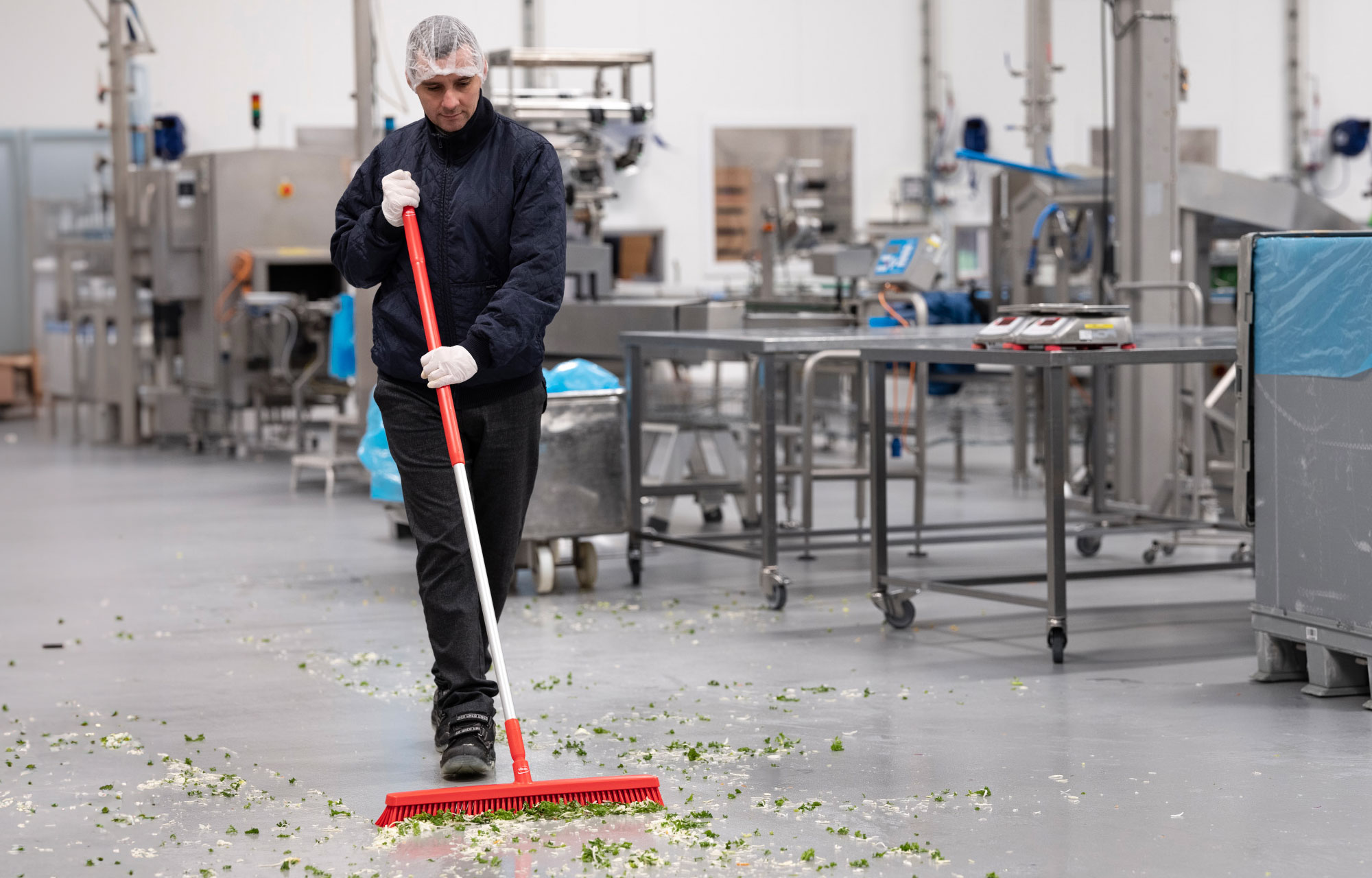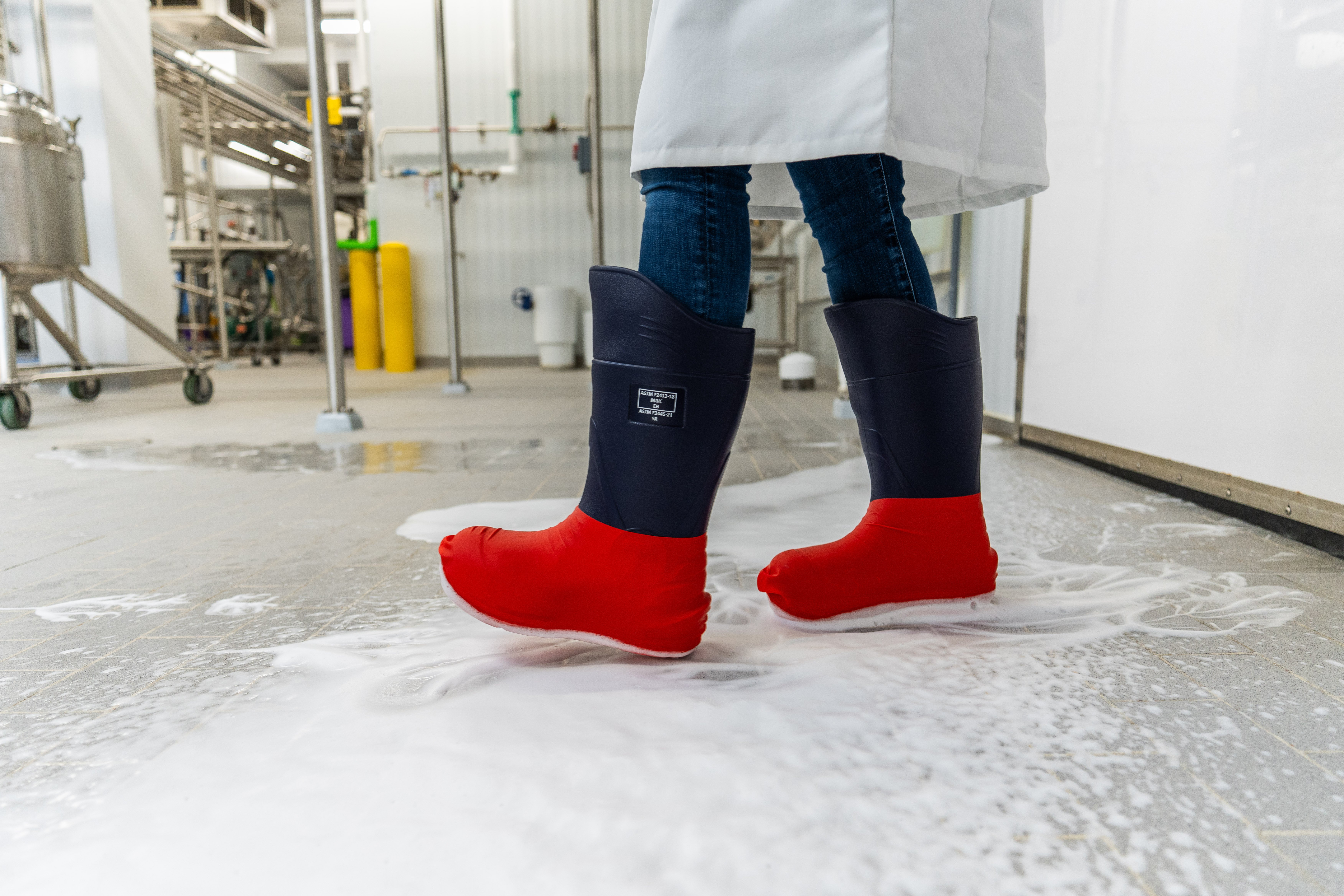
Good sanitation and janitorial practices are essential to the safe and clean operation of a food processing facility. One crucial element that can be overlooked is brooms.
A successful food processing facility is also a clean one. Maintaining a consistent level of cleanliness keeps food products free of pathogens and workspaces free of hazards. Using the right tools is key to maintaining those standards.
Brooms are an essential piece of cleaning equipment in every food processing plant. But not all brooms are the same – choosing a broom with the right bristles for the job is essential. There are many options when looking at the bristles in your broom's material, including stiffness, color, and flagged or unflagged bristles. Both flagged and unflagged brooms have applications within food processing plants. Choosing the correct one can make your clean-up job easier and more thorough.
Flagged Broom Bristles
Each type of broom bristle has its own function and is used to sweep up different materials. Flagged bristle ends look like split hairs. These bristles are ideal for sweeping up fine powders or debris in dry areas. The split ends allow each bristle to grab onto fine, dry materials like flour more effectively.
Flagged bristles can become matted and dirty when used in wet applications, making them less than ideal for those situations.
A flagged bristle will not be the right tool for the job if you have a floor with wet or larger debris. Unflagged bristles are standard bristles without split ends, making them better for sweeping up larger debris and more effective on wet floors. Because of their larger ends, they will not do a good job sweeping up fine powders.

Flagged (left), Unflagged (right)
Regardless of what your facility produces, each needs a broom with flagged bristles and another with unflagged bristles. Maintaining a clean facility includes keeping floors free from debris and hazards, so using both types of bristles is essential.
When purchasing brooms for your food processing facility, there are other considerations beyond what type of bristles will work best. When selecting a broom, you should choose one that is strong and durable and can be used without breaking or deteriorating for a long time. The right economical choice is often finding the broom that will have to be replaced the least frequently. You should also consider what kind of handle best suits those using the broom to clean your work areas – you want to make sure the broom is used effectively

Color coding is a strategy frequently used in food processing facilities. It organizes materials better and prevents cross-contamination. Allergen color coding is critical in spaces producing foods with common allergens. Brooms are a crucial tool in a color-coded system. For example, you don’t want to use the same broom to sweep the floor in a room producing products with nuts and then again in a nut-free space. Shop color-coded products here.
Brooms may seem simple, but they serve an important function in maintaining a clean environment. A durable broom with the right bristles can make janitorial duties faster and easier. Whether you need flagged or unflagged bristles in red, blue, or green, you can find them at Nelson-Jameson. Browse through our extensive catalog of broom and sweeping products on our website.
Nelson-Jameson prides itself on being your one-stop shop for brooms, bristles, and all of your other janitorial needs. Nelson-Jameson offers a wide variety of cleaning products to keep your facility clean and productive. In addition to a variety of products, you will also find different color options for effectively maintaining a color-coded system.

December 10, 2025
What is OSHA's Regional Emphasis Program (REP) for the food manufacturing industry? The OSHA Regional Em...

December 8, 2025
There is a fundamental connection between worker safety and food safety: A failure in worker safety can ...

December 1, 2025
Nelson-Jameson understands that efficiency and worker safety are equally important goals in food manufac...